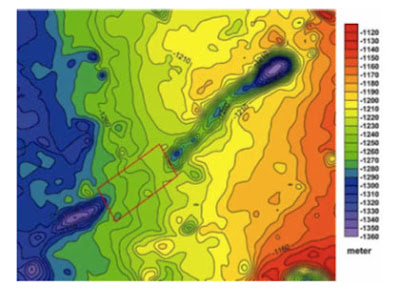Makellos: Sonnenfleckenfreie Sonne am 2. März 2008 When sunspots are dark areas on the visible solar surface (photosphere) that are cooler and therefore emit less visible light than the rest of the surface and how they are created by local magnetic fields. had reached
During the last solar cycle 23 may be maximum activity with a previously never before recorded high number of sunspots in 2001, followed by an unusually prolonged period strikingly low activity, called solar minimum, followed by new and current cycle number 24, the activity increases again, and now according to the estimates of many astronomers reach its peak 2012/2013 could.
www.grenzwissenschaft-aktuell.de
+ + +
HERE
they can our daily newsletter order
Artistic representation of the interior of the sun, the plasma current appears here as a black-belt loops, as they combine the surface of the sun with its interior. be repeated in future.
they can our daily newsletter order
Artistic representation of the interior of the sun, the plasma current appears here as a black-belt loops, as they combine the surface of the sun with its interior. be repeated in future.
was a result of this record it to a minimum cooling and collapse of the terrestrial thermosphere (... we reported ) and a weakening of the magnetic field of the sun and the solar wind, in the cosmic rays extent have not been known to penetrate into the solar system (... we reported a 2). At the same time, solar researchers presented the question of where the sunspot had ended up.
 The answer is for researchers in belts of plasma flows inside the sun. "If dying sun spots, their magnetic remnants from fall to a depth of 300,000 km below the solar surface. The dynamo of the sun strengthens, then the magnetic fields actually dying. Such revived towards that - almost like a cork under water - again starting at the surface and a new sunspot cycle "
The answer is for researchers in belts of plasma flows inside the sun. "If dying sun spots, their magnetic remnants from fall to a depth of 300,000 km below the solar surface. The dynamo of the sun strengthens, then the magnetic fields actually dying. Such revived towards that - almost like a cork under water - again starting at the surface and a new sunspot cycle " sunspot cycles of the past century. The blue curve shows the cyclical variation in the number of sunspots. The red bars show the sun, the cumulative number of spotless days. The minimum of solar cycle number 23 was the longest since the beginning of the space age with the largest consecutive Number of sun-free days. as this would promote the sunspot production - but this effect remains. reached when the remains of the sunspot the inner dynamo, they rode on the plasma flows through the reinforcement zone is simply too fast through it, than could be increased - which affected the production of new sunspots.
"
later, when then in the early 2000s, the new computer model, the plasma current belt slowed down again, had the magnetic fields of the former sunspots actually may indeed recover, but was at the time of the injury have been too large and "there was hardly supply for new sunspots "
. also supported the slow circulation of the plasma flows, the re-ascent and not delayed by even the beginning of the solar cycle number 24 (... we reported ). " was the stage for the deepest solar minimum So prepare " said the other co-author of the study Peter Martens of the" Montana State University "Understanding the way solar minima and predicted needs is something that we're so far not been possible - and it is a very important thing " says Lika Guhathakurta of the" Helio Physics Division of NASA. During solar maxima during which it is usually too violent eruptions phases are relatively short lasting, with a few years, can solar minima for many years, indeed even persist for decades. The most famous example is the so-called Maunder minimum, which in the 17th Whole century and lasted 70 years with the peak of the so-called Little Ice Age between the 15th and 19 Century went hand in hand. Until now, scientists seek necessary to understand possible links between the two phenomena.
As a next step in their exploration of the Sun, is NASA's solar observatory "Solar Dynamics Observatory (SDO), the interior Watch our star and thus the plasma current belt, in order to understand future minima even better and be able to predict. . also supported the slow circulation of the plasma flows, the re-ascent and not delayed by even the beginning of the solar cycle number 24 (... we reported ). " was the stage for the deepest solar minimum So prepare " said the other co-author of the study Peter Martens of the" Montana State University "Understanding the way solar minima and predicted needs is something that we're so far not been possible - and it is a very important thing " says Lika Guhathakurta of the" Helio Physics Division of NASA. During solar maxima during which it is usually too violent eruptions phases are relatively short lasting, with a few years, can solar minima for many years, indeed even persist for decades. The most famous example is the so-called Maunder minimum, which in the 17th Whole century and lasted 70 years with the peak of the so-called Little Ice Age between the 15th and 19 Century went hand in hand. Until now, scientists seek necessary to understand possible links between the two phenomena.
 books on the subject:
books on the subject: - - -
sources: international scientific aktuell.de / nasa. gov
0 comments:
Post a Comment